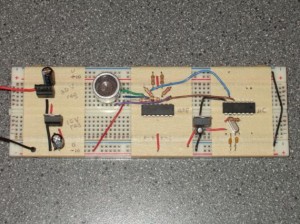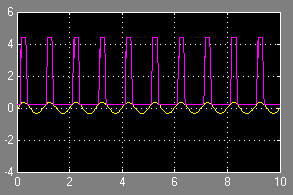The old guitar tuner I made works fine, but I’m thinking of some improvements:
- The first priority is to switch the power supply from a 16 mm coin cell to a 20 mm coin cell. 20 mm cells are way easier to find: the dollar store down the street carries 2032 cells (2032 means 20 mm diameter, 3.2 mm height), but 1632 cells are expensive and hard to find. Right now I’m clamping a 3x AA battery holder to the tuner’s + and – power pins, which is not comfortable.
- The rotary switch is too expensive. A 0.1″ two-row header with a jumper to select the tuner’s frequency will be cheaper, and won’t be an ugly blue box. This is still not as flexible as the 7-segment display the original project used.
- I’d like to use a low profile DIP switch to turn the power on and off instead of (or in addition to) mucking around with sleep mode.
- It would be cool to use a surface mount microcontroller and crystal. Getting an STK 600 routing card for 14-pin SOIC AVR chips might be worth it if I find money somewhere.
I considered replacing the microcontroller with a 555 timer, but I don’t think the 555 timer will generate sufficiently precise frequencies because of the tolerances in the resistors and capacitors.

